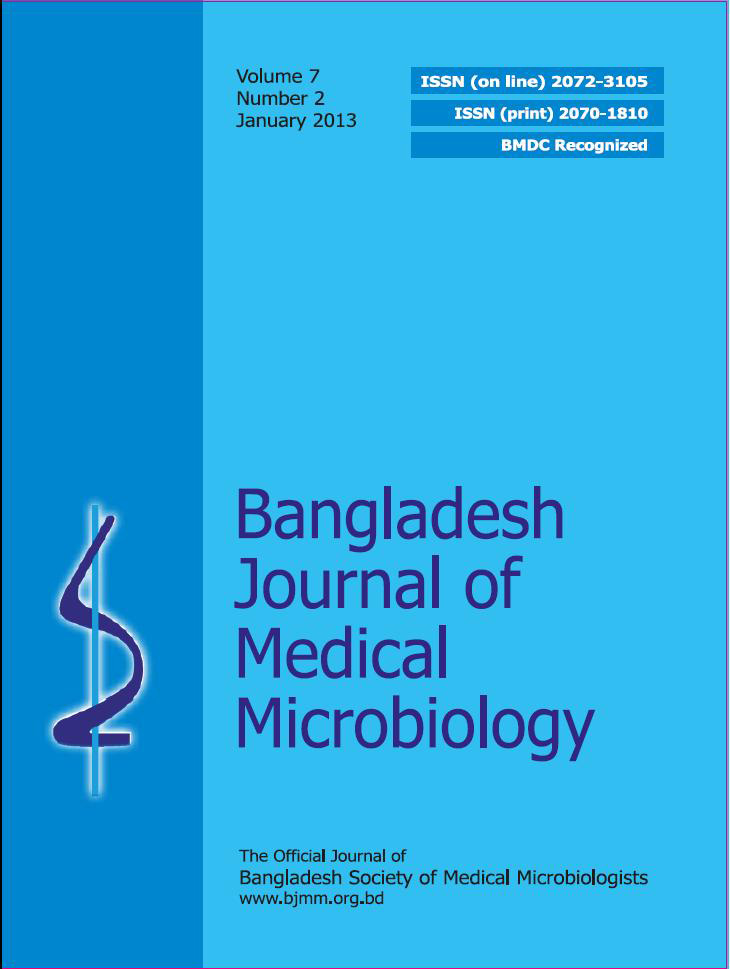Eosinophilic Cationic Protein in Bronchial Asthma current concepts
DOI:
https://doi.org/10.3329/bjmm.v7i2.19331Keywords:
Eosinophil, Cationic Protein, Bronchial AsthmaAbstract
Bronchial asthma is a chronic and inflammatory disease of lungs. On the basis of pathogenesis, asthma can be grouped into allergic, inflammatory, neurogenic and physical mechanisms. It is characterized by a 50 fold increase in the number of eosinophil in relation to neutrophil in the bronchial mucosa. After allergic sensitization, regulatory Th2 cell releases IL-5. This IL-5 is responsible for differentiation and maturation of eosinophil. On re-exposure, activation and degranulation of eosinophil occur. In this review this mechanism is described in updated way.
DOI: http://dx.doi.org/10.3329/bjmm.v7i2.19331
Bangladesh J Med Microbiol 2013; 07(02): 25-27
Downloads
867
871

